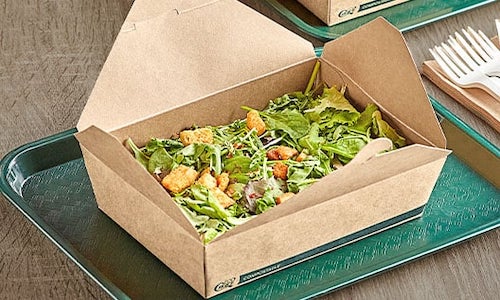
As our lifestyles and food culture evolve, food takeout has become an everyday convenience, especially with delivery services bringing meals to doorsteps. But do you know the different types of disposable takeout boxes and what makes them different? Based on recent data, takeout boxes generally fall into three main categories: disposable plastic containers, disposable paper boxes, and biodegradable boxes.
1. Disposable Plastic Takeout Boxes
Disposable plastic takeout boxes are often divided into two types based on materials: foam plastic and PP plastic.
- Foam Plastic Boxes: Made from polystyrene and processed with a foaming agent, foam plastic boxes are widely used due to their affordability and insulation qualities. However, their environmental impact is significant, contributing to “white pollution.” When heated above 65°C, these boxes can release harmful substances like bisphenol A (BPA), a chemical that trigger health risks when digested.
- PP Plastic Boxes: Made from food-grade polypropylene, PP plastic boxes are durable and heat-resistant without releasing harmful chemicals. High-quality PP plastic containers are often clear and odorless, while low-quality alternatives may have a strong odor and potentially contain harmful substances.
2. Disposable Cardboard Boxes
Cardboard takeout boxes, typically made from wood or paper, offer a partial reduction in plastic use. For waterproofing and grease resistance, these boxes usually have a plastic lining, which may release chemicals if exposed to high temperatures. While using cardboard reduces some plastic waste, it may still impact the environment due to deforestation and wastewater produced while obtaining the raw material.
3. Biodegradable Takeout Boxes
Biodegradable takeout boxes are distinguished by their ability to break down naturally, using materials that can be sustainably renewed.
- Partially Biodegradable Boxes: Often made from cornstarch-based polymers, partially biodegradable boxes provide a level of water and oil resistance without harmful chemicals. Authentic cornstarch boxes have a natural yellowish hue and a plant-based scent, while excessively white boxes may contain color additives.
- Fully Biodegradable Boxes: Produced from materials like straw, reed, and bamboo. These boxes can break down into carbon dioxide and water through natural microbial degradation. Despite being slightly more expensive, these biodegradable boxes are expected to become the best choice for sustainable disposable containers as the demand for environmental-friendly options grows.
For high-quality food storage and eco-friendly takeout solutions, Chefcoca offers a wide selection of disposable containers and sustainable packaging options to support your green dining experience.


